Misrata strike mystery: exclusive pictures
 Alex Thomson
Chief Correspondent
Alex Thomson
Chief Correspondent
Channel 4 News has obtained photographs showing the devastation around a site near the Libyan city of Misrata where at least 12 rebels were killed in an explosions, blamed by locals on NATO.
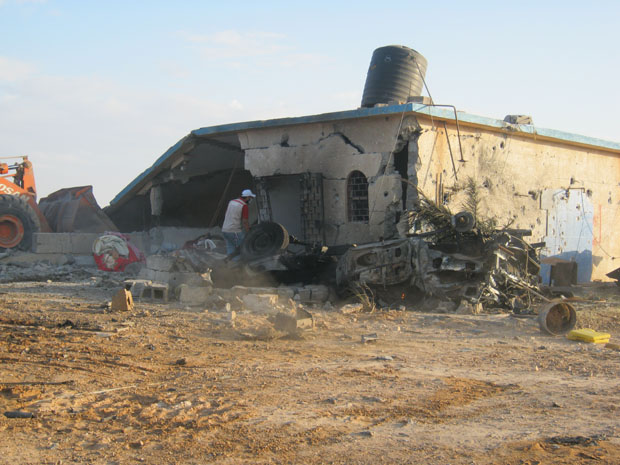
At least 12 rebels are believed dead after a rebel arms store east of Misrata was destroyed on Wednesday afternoon.
Locals have said NATO forces destroyed the building, however NATO has not yet confirmed or denied the claims.
Red Crescent volunteers who had been at the scene of the blast told Chief Correspondent Alex Thomson:
“It was horrible. There were two burning cars there. The roof of the building had collapsed. People were trapped. There were bits of bodies all over the place. I counted at least twelve dead people there. It was awful.”
The latest NATO strike briefings make no mention of buildings targeted in Misrata, instead detailing several vehicles that were destroyed.
A NATO statement read that on 27 April the key targets and engagements included:
“In the vicinity of Misrata: 2 rocket launchers; 2 artillery vehicles; 1 armoured personnel carrier.”
Writing earlier in his blog Alex Thomson says the workers "insisted over and over again" that NATO was behind the strike:
The claims were more credible because all three were bona fide Red Crescent volunteers with name tags.
All in all pretty much the last people on earth who would want to smear NATO in any way.
Two had personally visited the scene as Red Crescent rescuers.
Read more on his blog: The price to pay for NATO protection?
Channel 4 News obtained these photos of the destruction, at a building on salt flats at least 15 km from the fighting:
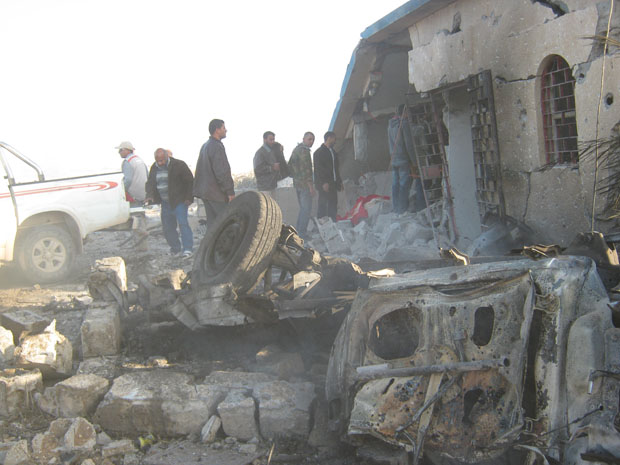
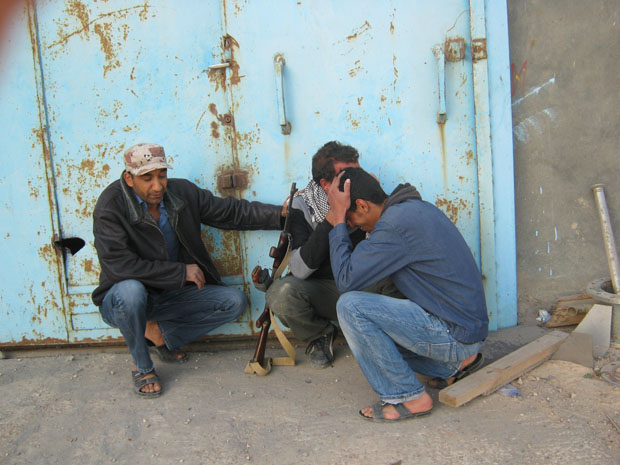
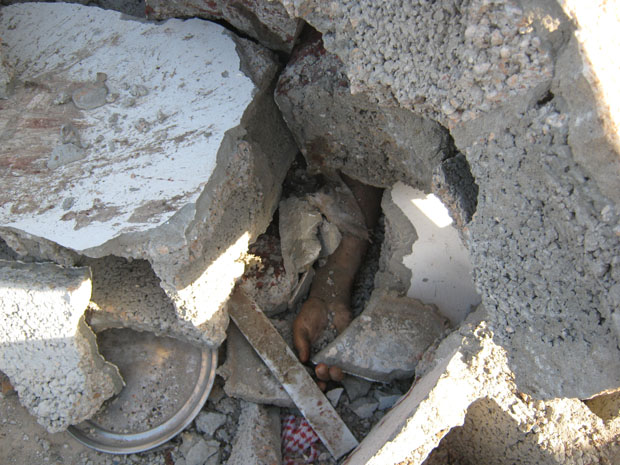
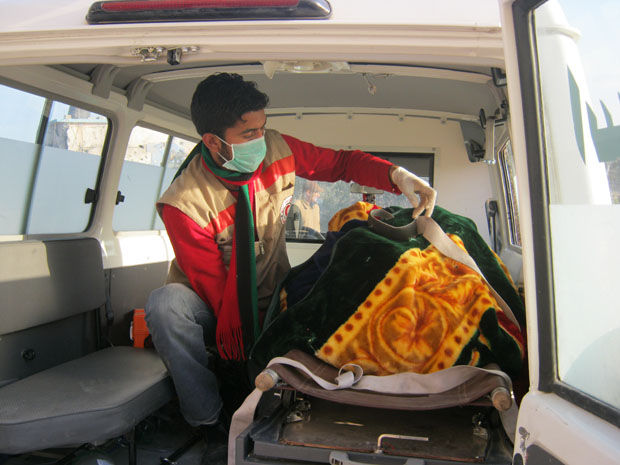

A man who was injured by the strike and was being treated at Misrata’s Hikam Clinic told Channel 4 News:
“It sounded different. Different noise from Gaddafi bombs. Much, much bigger. Different completely”.
When the team tried to visit the scene of the blast today, they were stopped at rebel checkpoints and told they had been ordered by NATO not to let anyone near it.
This morning we duly tried to take our sources back to the scene. It was impossible.
This is a rebel force with a media centre, simultaneously translated press conferences with Google imagery on screen; with drivers and cars at the disposal of any journo who pitches up - and yet, astonishingly, we were banned from visiting.
Eventually the reason was, they said, they had orders from NATO.
Read more on: The price for NATO's protection?
The port city has been under siege for more than 70 days, with some of the most bitter fighting taking place on its streets. In some cases, rebels fought hand to hand with Gaddafi gunmen, holed up in tower blocks.
In recent days Gaddafi’s troops have withdrawn out of the city, but have been pounding it from afar with long range artillery. (link)..
A NATO official told Channel 4 News: “NATO aircraft struck a number of combat vehicles 10 miles south east of Misrata port yesterday, targeting an area where NATO forces had broken up a large group of pro-Gaddafi forces on Tuesday.
“NATO cannot independently verify reports that these vehicles were operated by opposition forces. We deeply regret any loss of human life as our mission in Libya is to protect civilians and civilian populated areas against attack by the Qadhafi regime forces. There was no NATO attack on any building in or around Misrata.”
Local reaction is mixed, even if NATO is found to be to blame. One doctor at the Misrata hospital told Alex Thomson:
“It’s unfortunate but these things will happen. This is the price we have to pay for NATO protection.”
When these thing happen NATO routinely asks the rebels to keep the media away and anybody else for that matter. And this is not simply to control the political embarrassment.
There is also a genuine reason - once they've bombed a "target" once through error it is perfectly possible they might still return for alters to make sure the job was done, if the message has still not got through the chain of command
Read more on: The price for NATO's protection?
<!–
–>